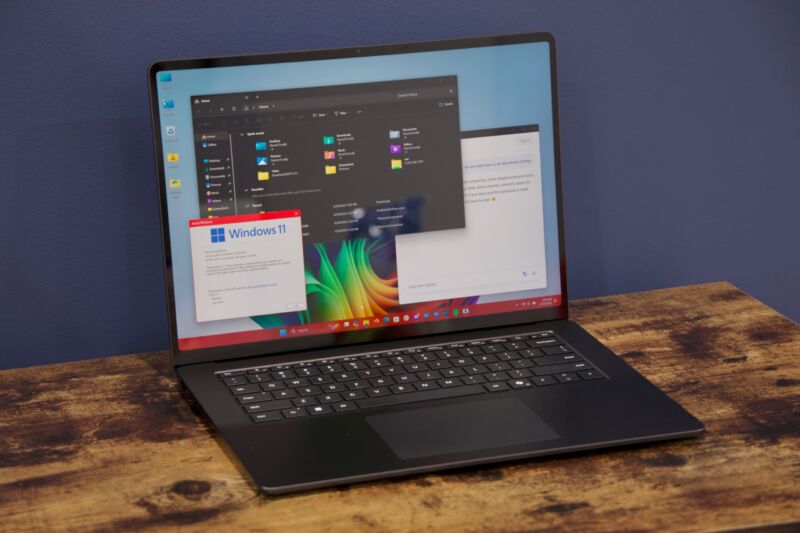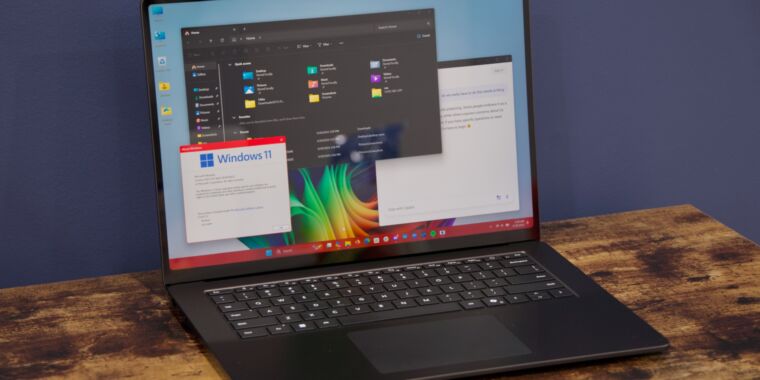
Andrew Cunningham
For the first time in the decade-plus that Microsoft has been trying to make Arm-powered Windows PCs happen, we’ve finally got some pretty good ones. The latest Surface Pro and Surface Laptop (and the other Copilot+ PCs) benefit from extensive work done to Windows 11’s x86 translation layer, a wider selection of native apps, and most importantly, Snapdragon X Pro and X Elite chips from Qualcomm that are as good as or better than Intel’s or AMD’s current offerings.
The main problem with these computers is that they’re all on the expensive side. The cheapest Snapdragon X PC right now is probably this $899 developer kit mini-desktop; the cheapest laptops start around the same $1,000 price as the entry-level MacBook Air.
That’s a problem Qualcomm hopes to correct next year. Qualcomm CEO Christiano Amon said on the company’s Q3 earnings call (as recorded by The Verge) that the company was hoping to bring Arm PC prices down to $700 at some point in 2025, noting that these cheaper PCs wouldn’t compromise the performance of the Snapdragon X series’ built-in neural processing unit (NPU).
That Amon singled out the NPU is interesting because it leaves the door open to further reductions in CPU and GPU performance to make cheaper products that can hit those lower prices. The Snapdragon X Plus series keeps the exact same NPU as the X Elite, for example, but comes with fewer CPU and GPU cores that are clocked lower than the Snapdragon X Elite chips.
Qualcomm may want to keep NPU performance the same because Microsoft has a minimum NPU performance requirement of 40 trillion operations per second (TOPS) to qualify for its Copilot+ PC label and associated features in Windows 11. Other requirements include 16GB of memory and 256GB of storage, but Microsoft specifically hasn’t made specific CPU or GPU performance recommendations for the Copilot+ program beyond the basic ones necessary for running Windows 11 in the first place. Copilot+ PCs come with additional AI-powered features that take advantage of local processing power rather than sending requests to the cloud, though as of this writing, there aren’t many of these features, and one of the biggest ones (Recall) has been delayed indefinitely because of privacy and security concerns.
Lofty goals for Arm PCs
Both Arm and Qualcomm have made lofty claims about their goals in the PC market. Arm CEO Rene Haas says Arm chips could account for more than half of all Windows PC shipments in the next five years, and Amon has said that PC OEMs expect as much as 60 percent of their systems to ship with Arm chips in the next three years.
These claims seem overly optimistic; Intel and AMD aren’t going anywhere and aren’t standing still, and despite improvements to Windows-on-Arm, the PC ecosystem still has decades invested in x86 chips. But if either company is ever going to get anywhere close to those numbers, fielding decent systems at more mass-market prices will be key to achieving that kind of volume.
Hopefully, the cheaper Snapdragon systems will be available both as regular laptops and as mini desktops, like Qualcomm’s dev kit desktop. To succeed, the Arm Windows ecosystem will need to mirror what is available in both the x86 PC ecosystem and Apple’s Mac lineup to capture as many buyers as possible.
And the more Arm PCs there are out there, the more incentive developers will have to continue fixing Windows-on-Arm’s last lingering compatibility problems. Third-party drivers for things like printers, mice, audio preamps and mixers, and other accessories are the biggest issue right now since there’s no way to translate the x86 versions. The only way to support this hardware will be with more Arm-native software, and the only way to get more Arm-native software is to make it worth developers’ time to write it.

